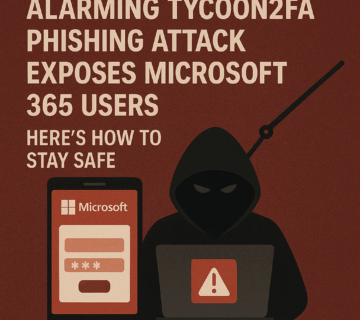
Alarming Tycoon2FA Phishing Attack Exposes Microsoft 365 Users – Here’s How to Stay Safe
This source describes the Tycoon2FA phishing campaign, a sophisticated attack specifically targeting Microsoft 365 users. The attack utilizes clever URL manipulation by using backslashes instead of forward slashes to evade traditional email security filters. Once clicked, the links lead to deceptive redirection chains and ultimately a phishing page designed to harvest user credentials. A significant aspect of this attack is its ability to bypass multi-factor authentication (MFA) through Phishing-as-a-Service infrastructure, allowing attackers full account access and potentially leading to severe data breaches. The article also provides key technical takeaways, indicators of compromise, and recommendations for protection, such as upgrading email filters, deploying real-time threat intelligence, and educating the workforce. ... Read More
